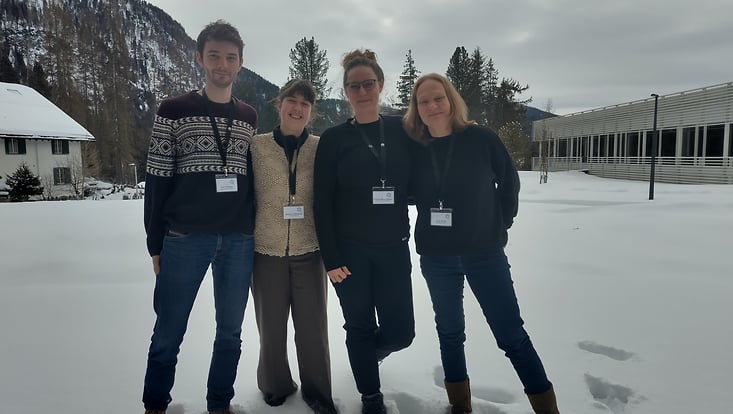Brand-new model outputs from MOMENT project presented at ICOS 2024 Science Conference
1 November 2024

Photo: Abdullah Bolek
MOMENT researcher Luana Basso from the Max-Planck-Institute for Biogeochemistry presented her latest results on inverse modelling of methane fluxes in Arctic regions at the ICOS 2024 Science Conference. The international conference takes place approximately every two years and focusses on the role of Integrated Carbon Observation Systems (ICOS) in addressing global changes.
The ICOS 2024 Science Conference took place in Versailles, France, from 10 to 12 September. It brought together top scientists, researchers and environmental experts to discuss the latest findings and innovations in climate and environmental monitoring.
Luana Basso gave an oral presentation in the session entitled "Greenhouse Gas Fluxes at High Latitudes and Climate/Human-Induced Feedbacks". In this session, newest understanding of the dynamics of greenhouse gas fluxes in high-latitude ecosystems were presented. Both, climate- and human-induced feedbacks on greenhouse gas processes and the carbon cycle in Northern latitudes were explored. Basso's presentation was well received by the audience and led to insightful discussions.
“In my presentation, I showed estimates of methane fluxes in the Arctic-Boreal region during the last decade (2010-2021) using an atmospheric inverse modeling approach. For this, I used in an integrative approach (1) the Jena CarboScope Global Inversion System, (2) wetland fluxes from the JSBACH model as initial flux, and (3) assimilated atmospheric observations from regional networks available in recent years.”, Basso explained. The advantage and novelty of this integrative approach is the ability to combine long-term atmospheric methane concentration data with modelling techniques to infer regional scale emissions. This provides valuable insights into seasonal and interannual variability at regional and local scales, and helps to reduce uncertainties between bottom-up emission estimates and atmospheric data.
“Our model outputs showed a clear regional and inter-annual variability in methane emissions and a seasonal pattern with higher emissions in summer.”, Basso stated.


